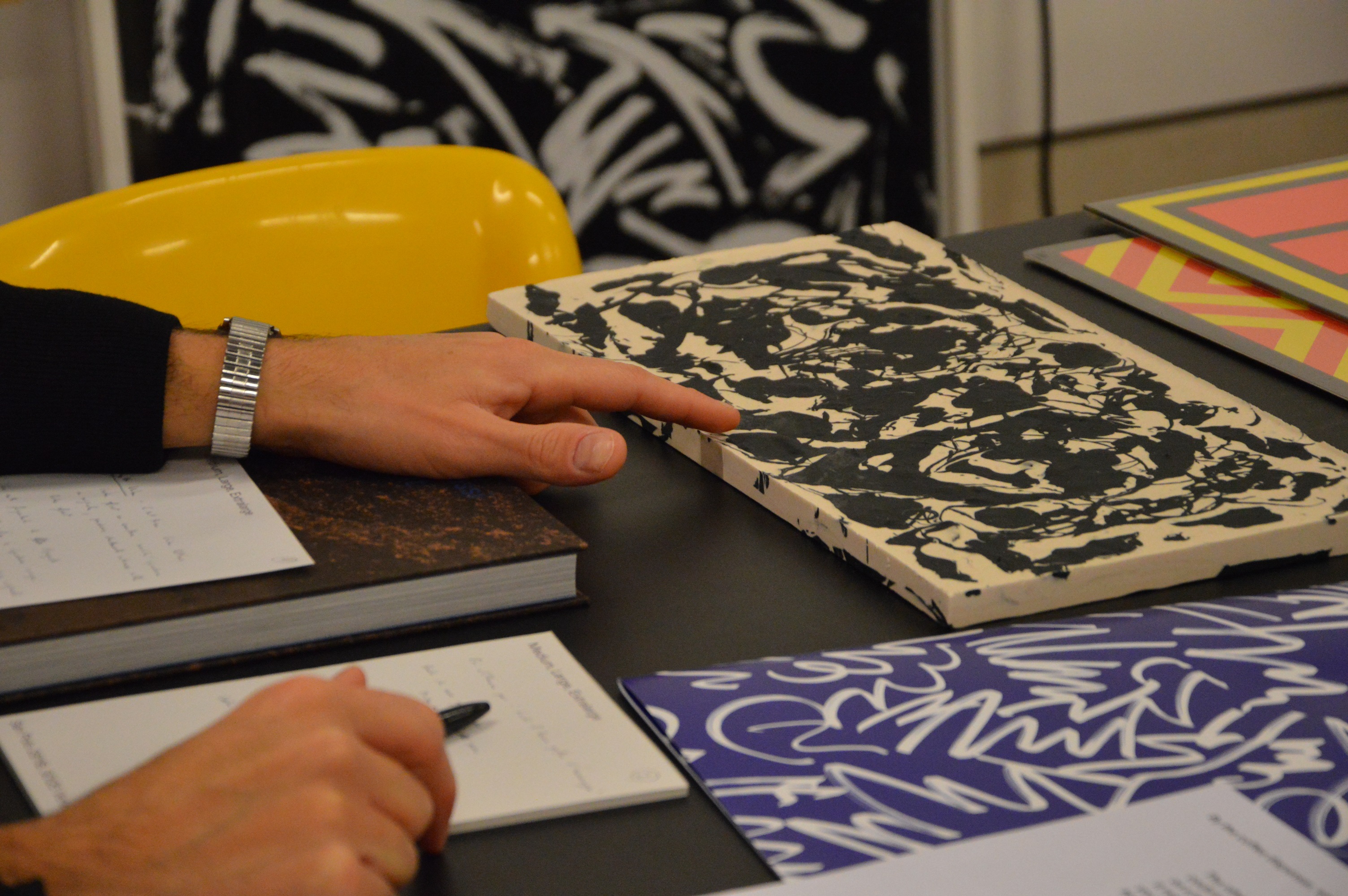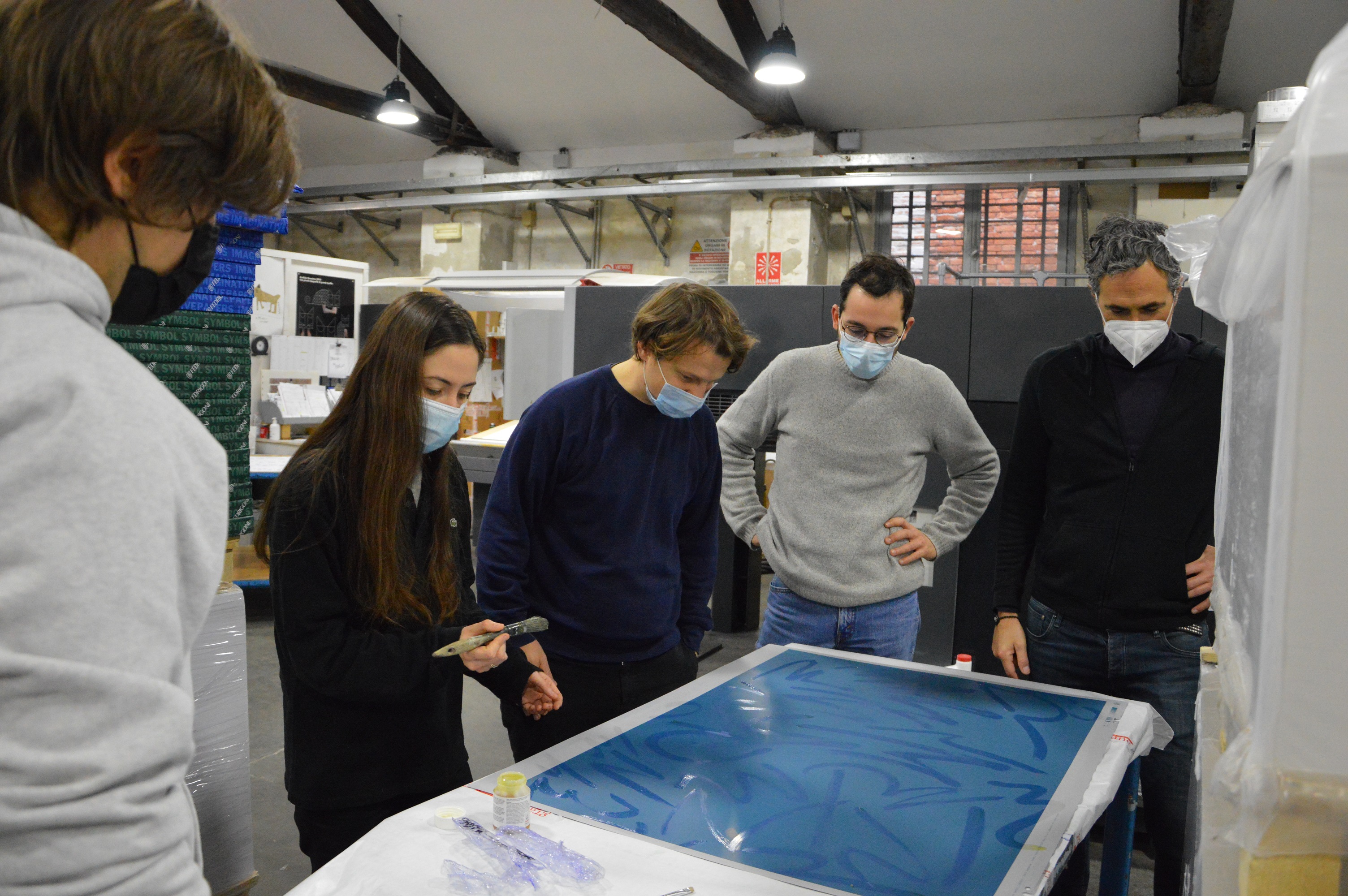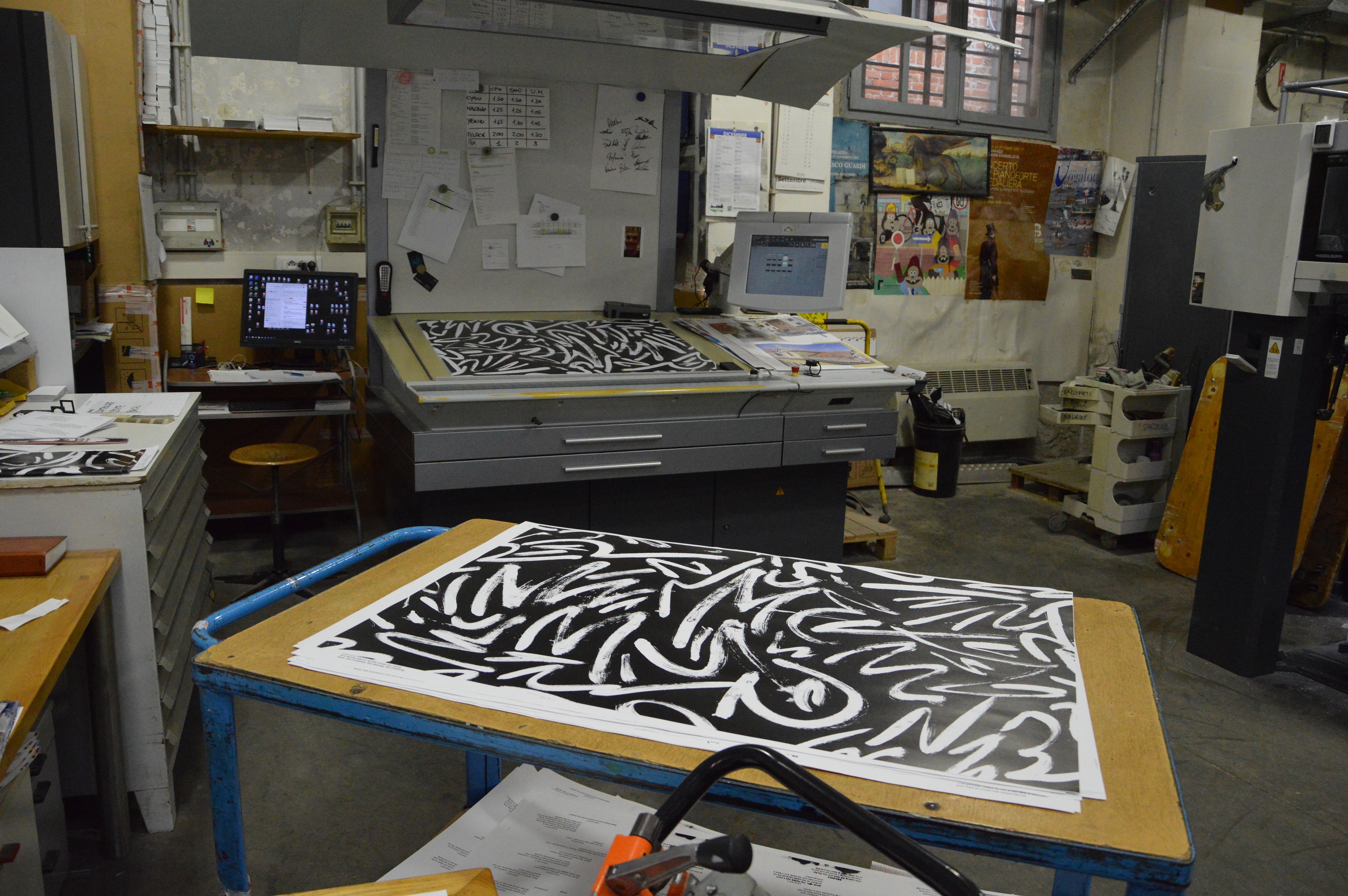In the historic center of Venice there is only one offset printer, in the Grafiche Veneziane headquarters at the Fondamenta Nuove, overlooking the northern lagoon. In the office they still remember when the mammoth machine was delivered by boat, as one of the huge installations that contemporary artists present at the Biennale. In offset printing, the ink is imprinted on the paper by a rubber roller, which in turn is impregnated according to the graphics present on the offset plate. The plate is developed with a polymer-based photosensitive film. If the image printed on the plate is formed correctly, offset printing guarantees a top-quality typographic reproduction.
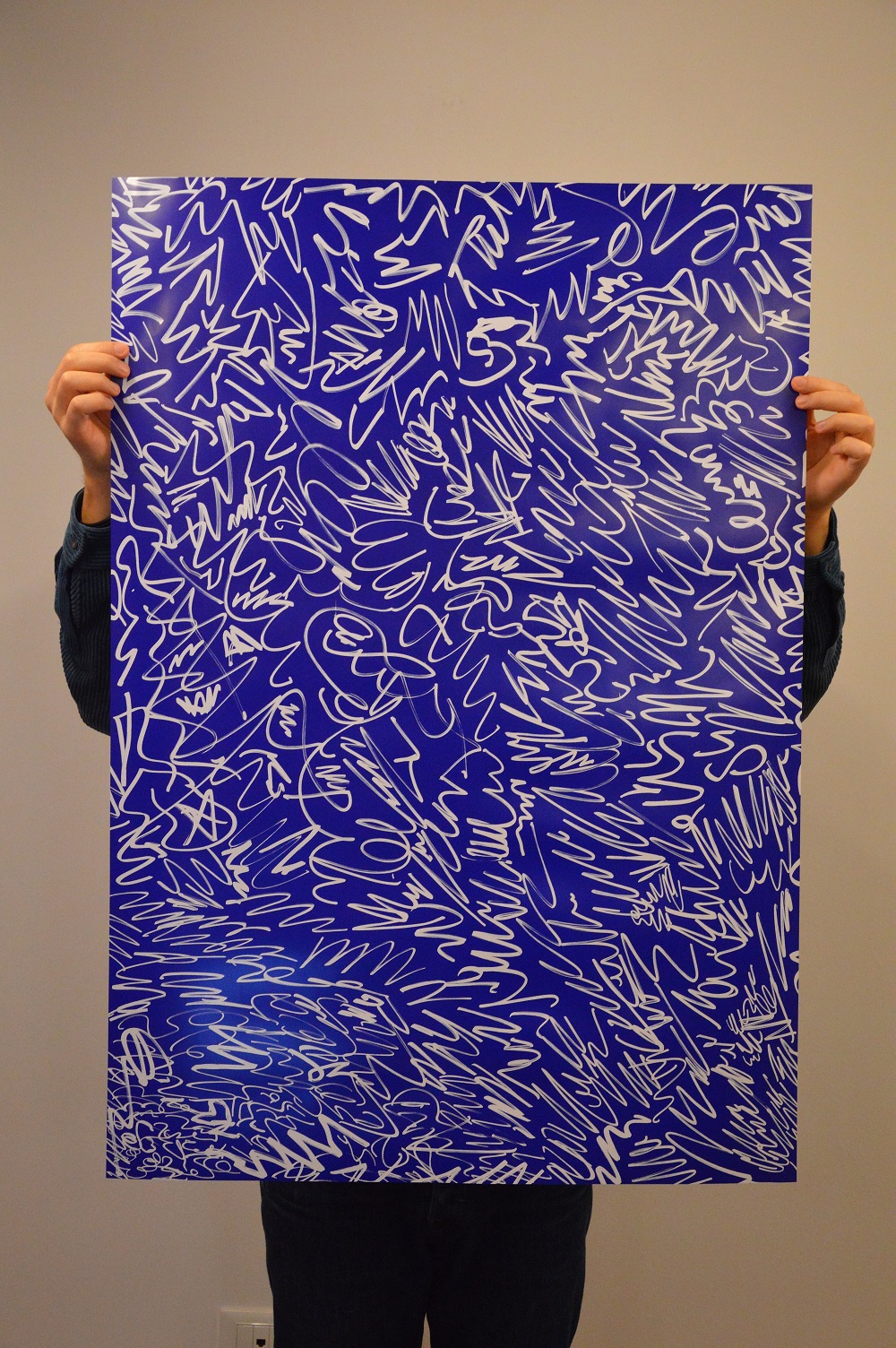
Lorenzo Mason, founder of Lorenzo Mason Studio, is one of the Venetian designers who has cultivated research in the typographic field with the most passion, in constant collaboration with Grafiche Veneziane.
"What project are you working on right now?"
"We are hacking the printing system".
Lorenzo explains that the pleasure and pain of those involved in graphic design is the reproduction of images that originate elsewhere. In developing an exhibition catalog, as often happens to him, there is a creative part of composition, but a significant portion of the activity consists in making sure that the images are reproduced correctly. Therefore, it is essential to follow the principles of control fitness, in which each phase can be verified, and the quality of the result maintained.
"So at some point we asked ourselves: how could we use the classic tools of graphic design and printing to reverse the process, and produce originals that have no precedent to replicate?".
To show us his idea, he invites us to attend the creative moment the next day, at the Grafiche Veneziane.
Luca Berta and Lorenzo Mason inside Grafiche Veneziane
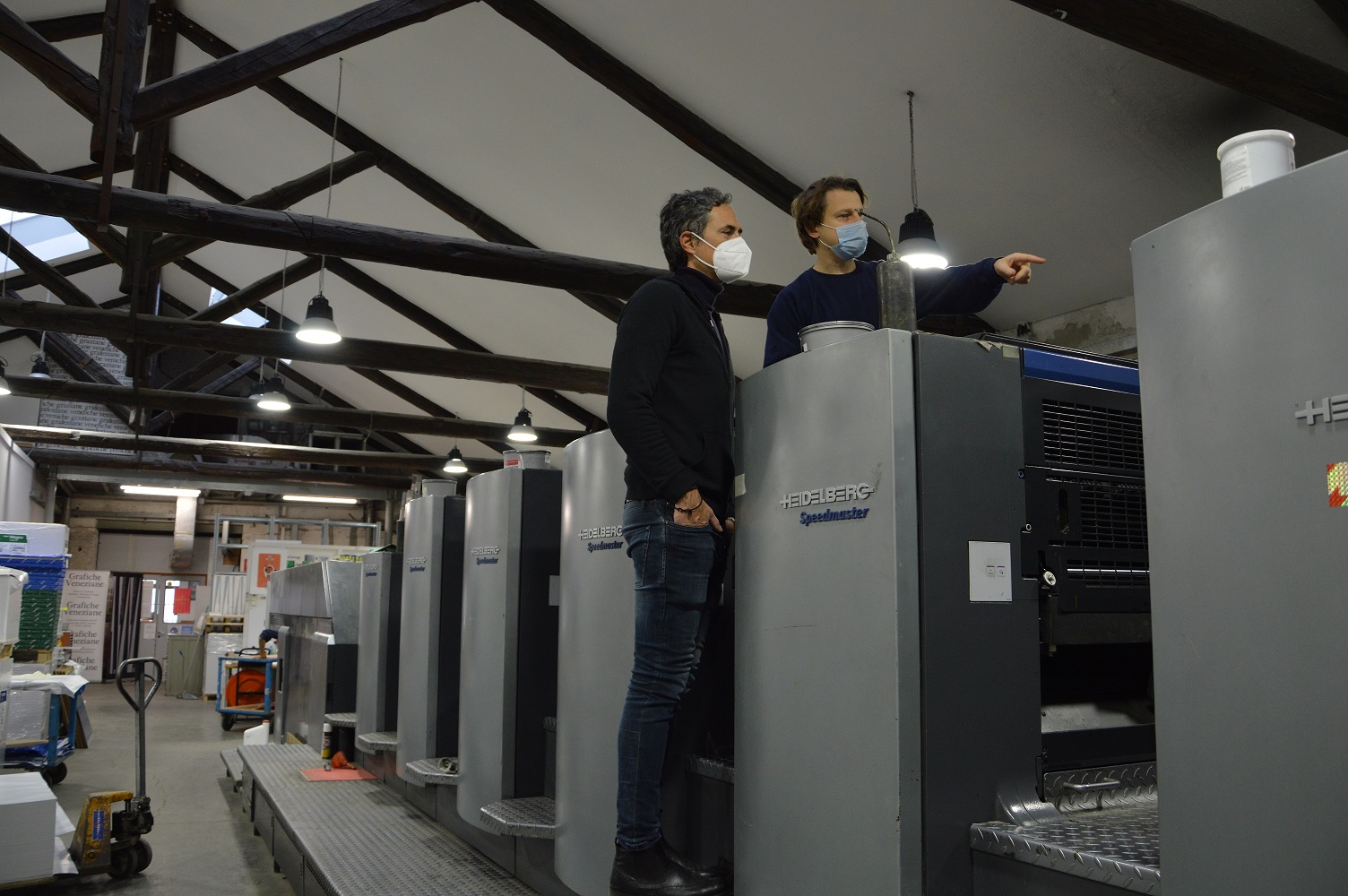
Lorenzo had started working as a designer even before graduating from IUAV, the architecture institute in Venice. After a brief experience at Design Work, in 2005 he returned to the lagoon and founded Studio M-L-XL together with Marco Campardo. They work for numerous clients, participate in major exhibitions (The New Italian Design in San Francisco in 2015, the Italian Pavilion at the London Design Biennial 2016), curate successful projects (The Breakfast Pavilion, 2017; Masters of Disguise, Seeds London, 2019). In 2015 with the client Morphine Records they asked Nathalie Du Pasquier to design ten vinyl LP covers, followed by another ten made by George Sowden. For the subsequent covers, the idea was born that leads to hacking of the typographic process.
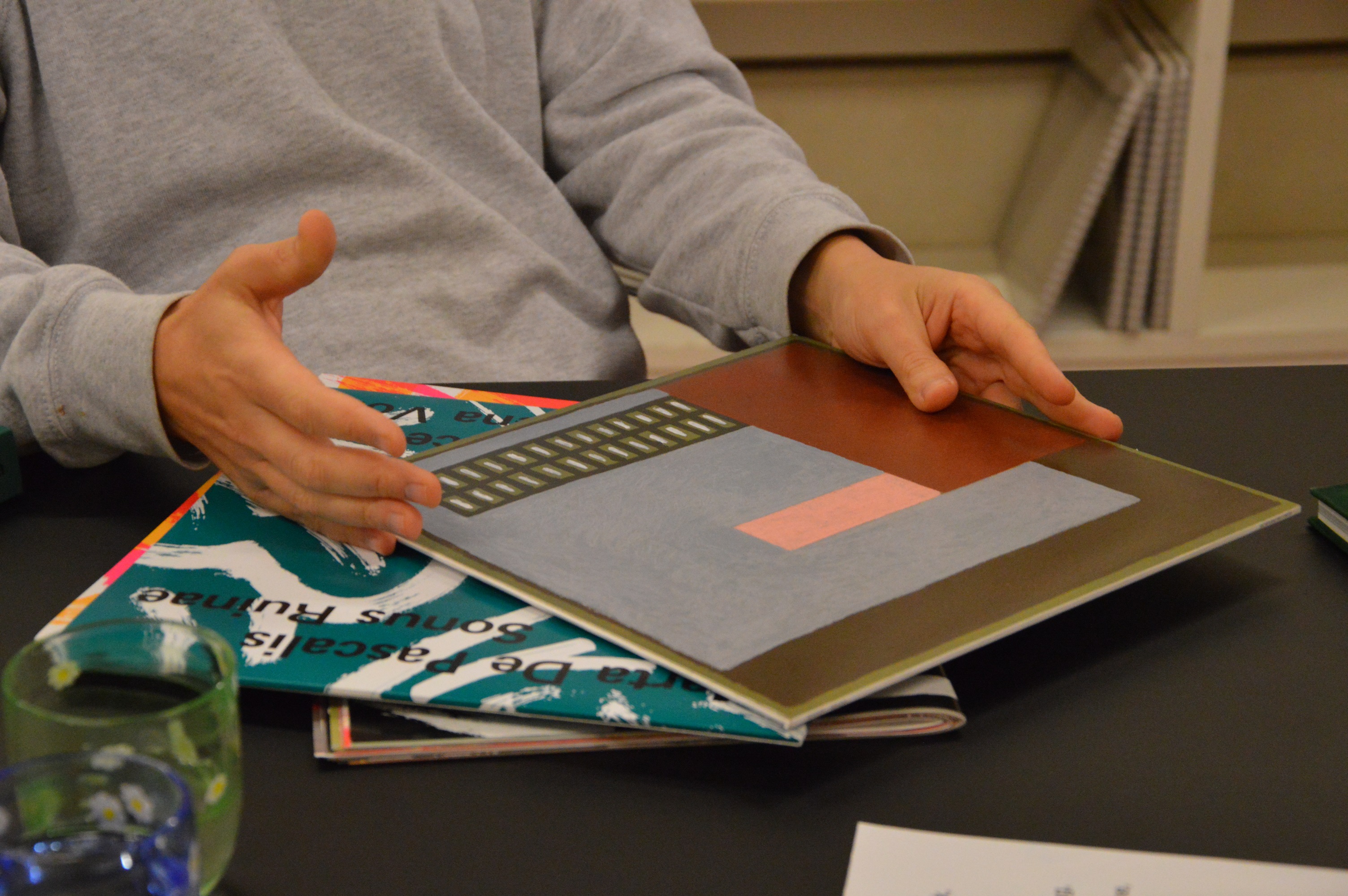
The offset plate is lying on a table. The blue photosensitive film covers it completely. Lorenzo dips a brush into a bottle of concealer, a transparent, viscous acid substance that typographers sometimes use to erase smudges. Then he traces large brushstrokes, with a casual but somewhat regulated gesture. He passes the brush into the hands of his collaborators, Dafne Pagura and Simone Spinazzè, who do the same. A negative pattern is drawn on the film, which is not the reproduction of a pre-existing image, but a new image, originating in the place where replication is usually already in progress.


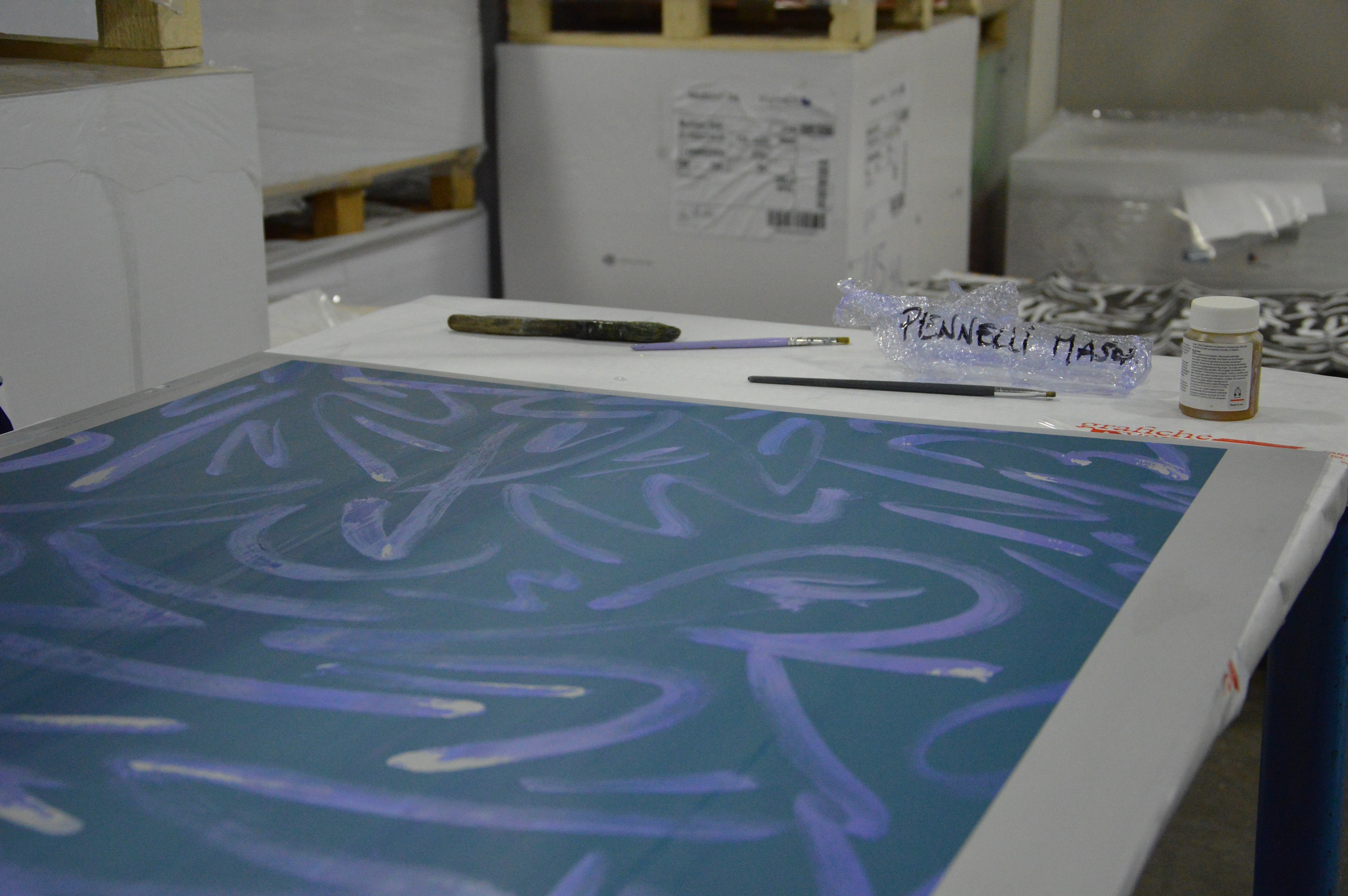
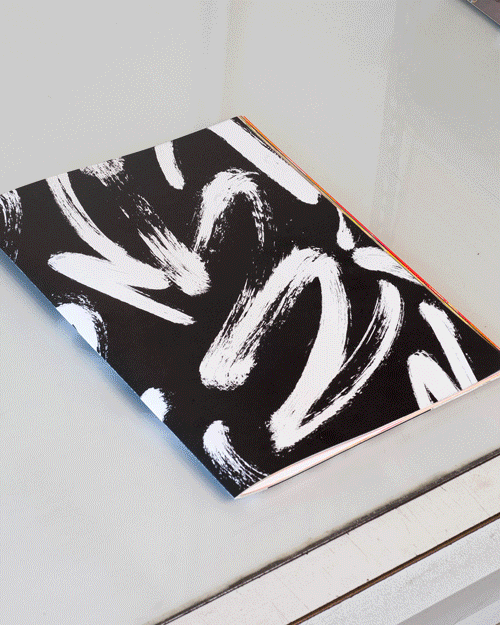
In addition to the patterns, it contains a metaphysical dialogue between the Studio and the Printer 1, Printer 2, and Printer 3 on the importance of experimenting.
The book (together with the previously published "Doodle Paintings") is part of "Printing is Painting", a long-term research project with Grafiche Veneziane.
"Acid Paintings" is on display from today March 24 till March 31 at Doli (Calle Della Regina 2243) in Venice.
The result is the hypnotic book Acid Paintings, an 88-page publication collecting two years' worth of experiments in manipulating the offset plates of a specific product, usually used to fix mistakes on unintended marks that can appear while printing.
The book is printed on six different stocks of paper, and also uses ten spot colours with the intention of showing how the same process reacts with both the different materials and the varying colour combinations.
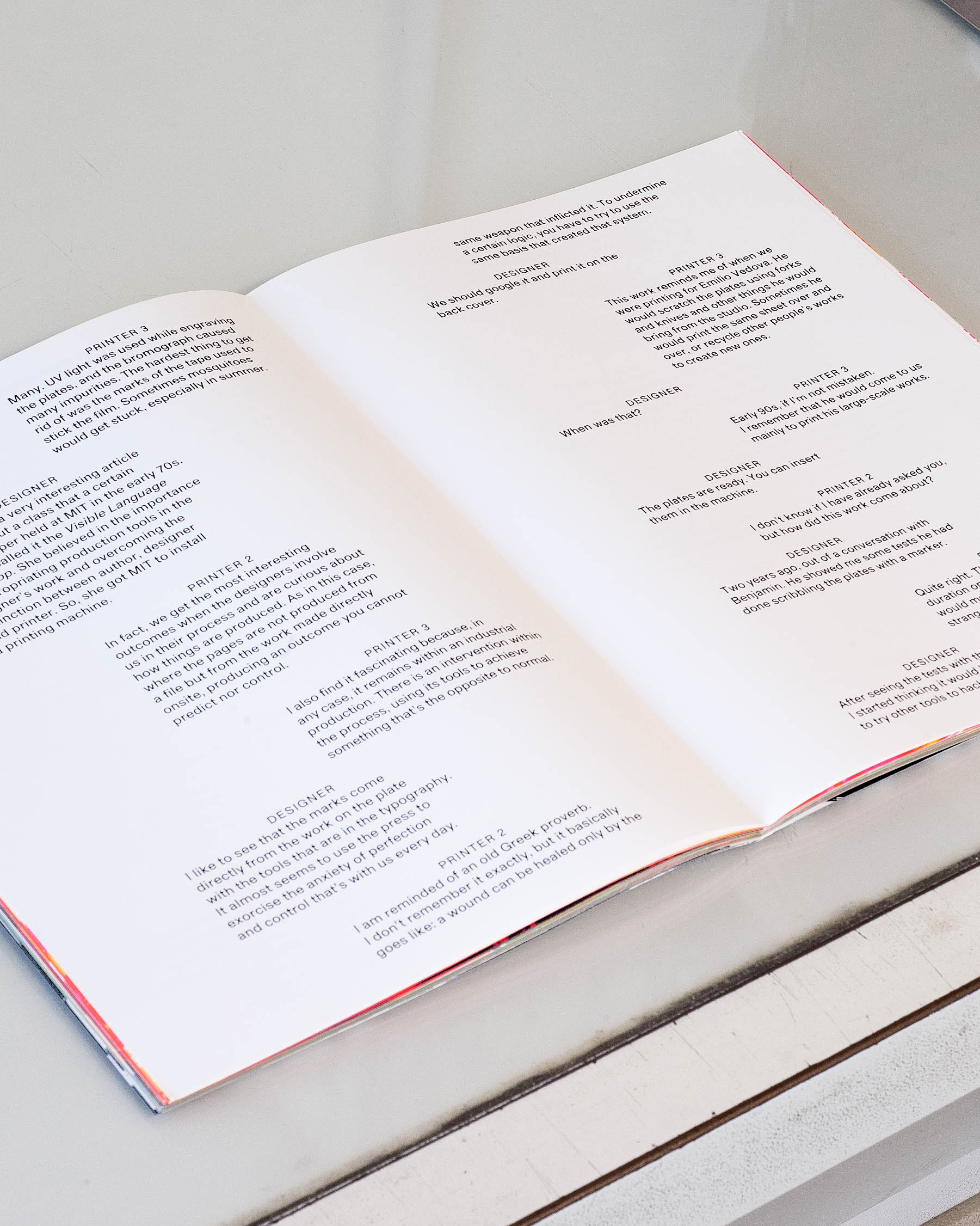
But Lorenzo's ideas for hacking the typographic system did not end there, and they will soon overflow from two dimensions to enter the domain of furniture design.
